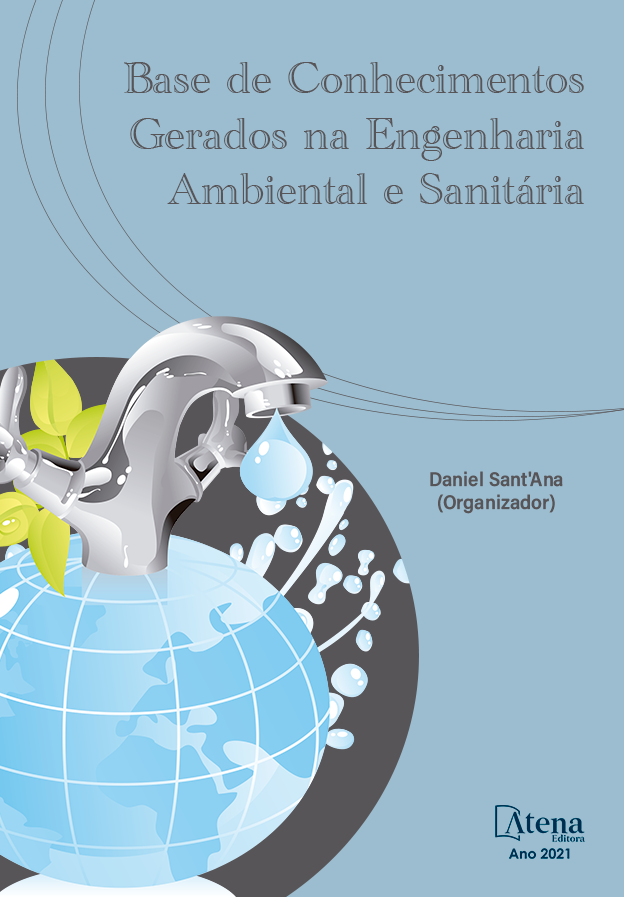
INFLUÊNCIA DAS EQUAÇÕES EXPLÍCITAS DE FATOR DE ATRITO NO DIMENSIONAMENTO DE REDES DE DISTRIBUIÇÃO
Este trabalho tem o objetivo de analisar a influência de equações explícitas para o fator de atrito f da equação universal da perda de carga de Darcy-Weisbach no dimensionamento de redes de distribuição e identificar as equações que mais se aproximam da fórmula de Colebrook-White. A indicação preferencial do uso da equação Darcy-Weisbach para o cálculo da perda de carga no dimensionamento de redes, que, por sua vez, necessita da obtenção do fator de atrito f para o cálculo em cada trecho. A fórmula do fator de atrito de Colebrook-White é a equação mais representativa para a realidade da tubulação, mas é implícita para f. As equações explícitas são aproximações que tentam contornar este problema, mas, muitas vezes, são equações extensas e apresentam erros, o que as tornam opções pouco confiáveis. A análise da situação no dimensionamento de uma rede ramificada e uma rede malhada a partir de cada uma das metodologias de fator de atrito selecionadas apresentaram resultados que permitiram avaliar quais as melhores opções alternativas de equações explícitas para a fórmula implícita de Colebrook-White, de acordo com os valores obtidos do fator f, da perda de carga total das redes e das pressões disponíveis nos nós. Os resultados exibidos indicam que as equações de Sousa-Cunha-Marques e de Zigrang-Silvester apresentam uma maior aproximação a fórmula de Colebrook-White, enquanto que a equação de Swamee-Jain apresenta valores que mais se distancia das outras equações e, apesar disso, a diferença consiste na terceira e quarta casa decimal, o que não a torna inviável para utilização.
INFLUÊNCIA DAS EQUAÇÕES EXPLÍCITAS DE FATOR DE ATRITO NO DIMENSIONAMENTO DE REDES DE DISTRIBUIÇÃO
-
DOI: 10.22533/at.ed.4442119016
-
Palavras-chave: Fator de Atrito. Equações Explícitas. Redes de Distribuição.
-
Keywords: Friction Factor. Explicit Equations. Distribution Networks.
-
Abstract:
This work aims to analyze the influence of explicit equations for the friction factor f of the Darcy-Weisbach universal head loss equation in the design of distribution networks and to identify the equations that most closely match the Colebrook-White equation. The preferred indication of the use of the Darcy-Weisbach equation for the calculation of the head loss in the dimensioning of networks, which, in turn, needs to obtain the friction factor f for the calculation in each stretch. The Colebrook-White friction factor is the most representative equation for the pipe reality, but it is implicit for f. Explicit equations are approximations that try to circumvent this problem, but they are often extensive equations and have errors, which make them unreliable options. The analysis of the situation in the dimensioning of a branched network and a meshed network based on each of the selected friction factor methodologies presented results that allowed us to evaluate which are the best alternative options of explicit equations for the Colebrook-White implicit formula, according with the values obtained from the factor f, the total pressure drop of the networks and the pressures available at the nodes. The results shown indicate that the Sousa-Cunha-Marques and Zigrang-Silvester equations present a greater approximation to the Colebrook-White formula, while the Swamee-Jain equation presents values that are more distant from the other equations and, despite that , the difference consists of the third and fourth decimal place, which does not make it unfeasible for use.
-
Número de páginas: 15
- Alessandro de Araújo Bezerra
- Bruno Duarte Moura
- Mauro César de Brito Sousa
- Renata Shirley de Andrade Araújo


